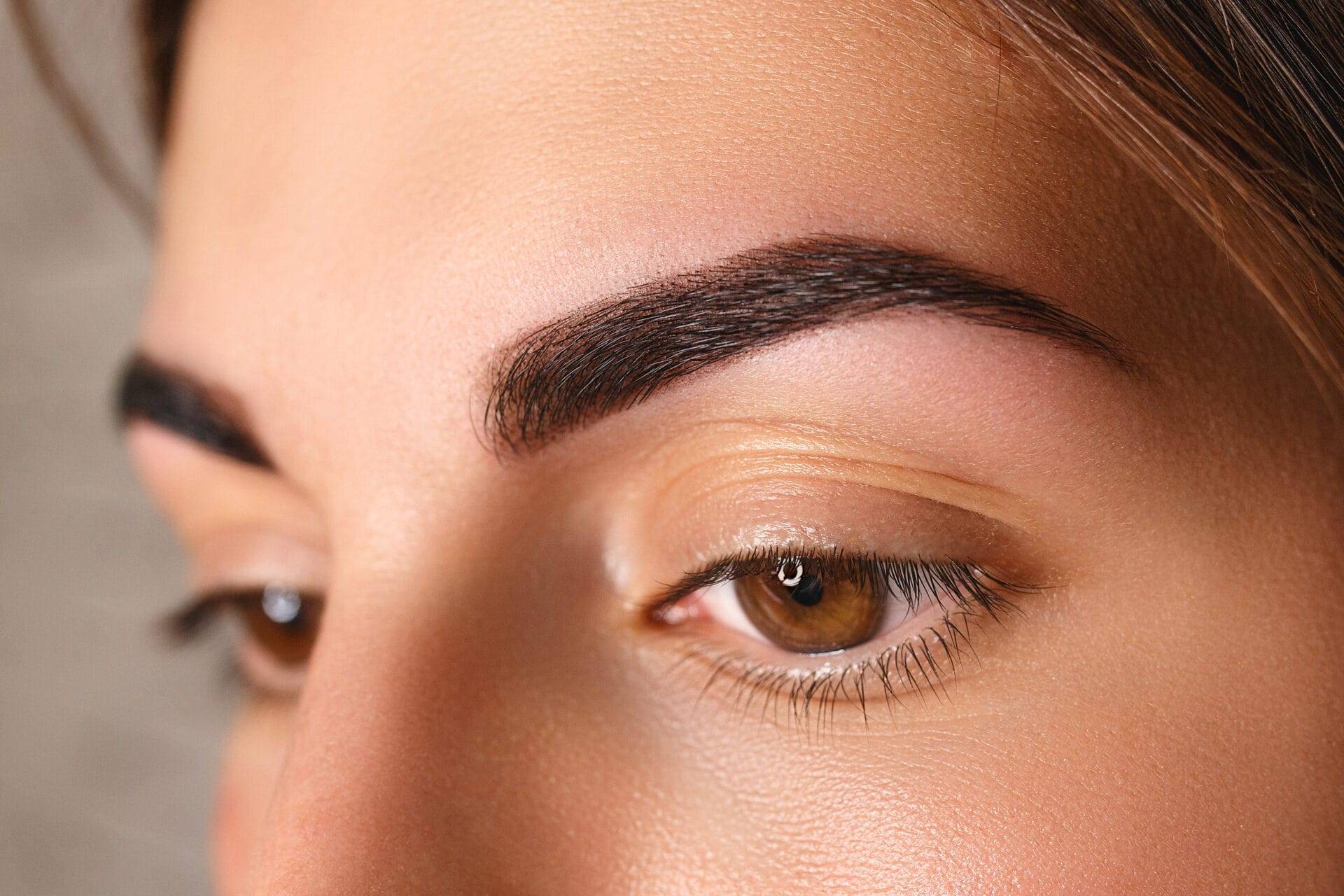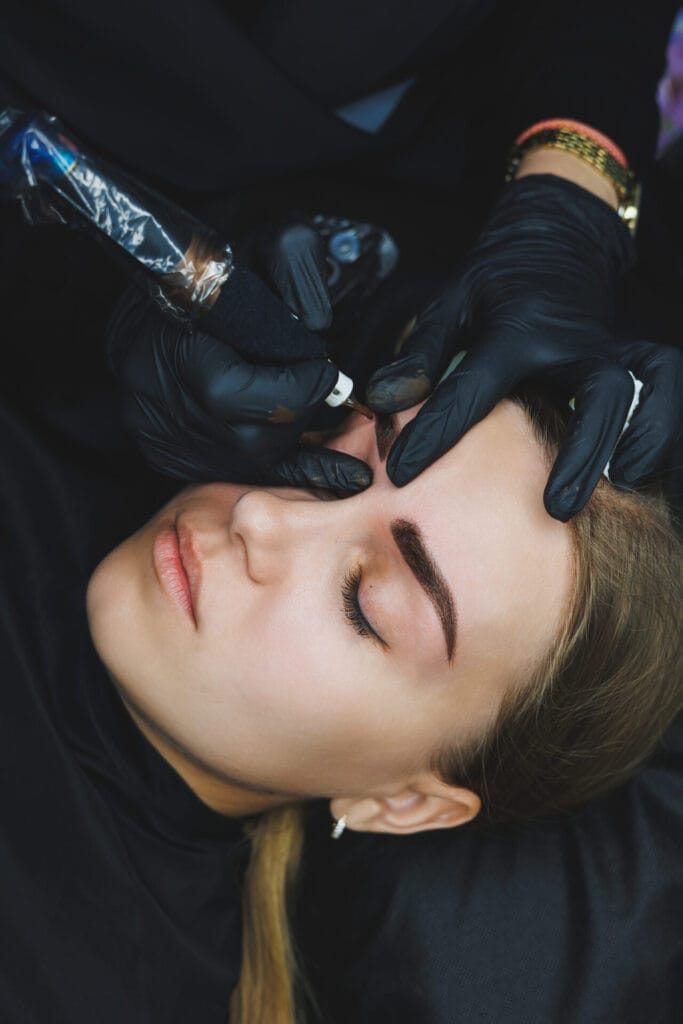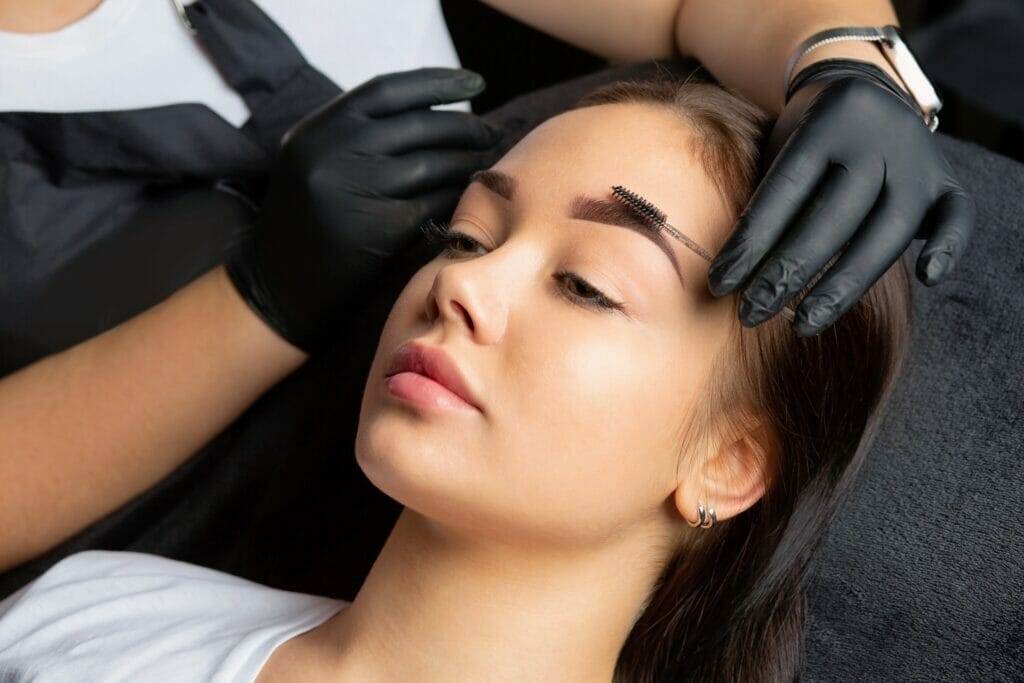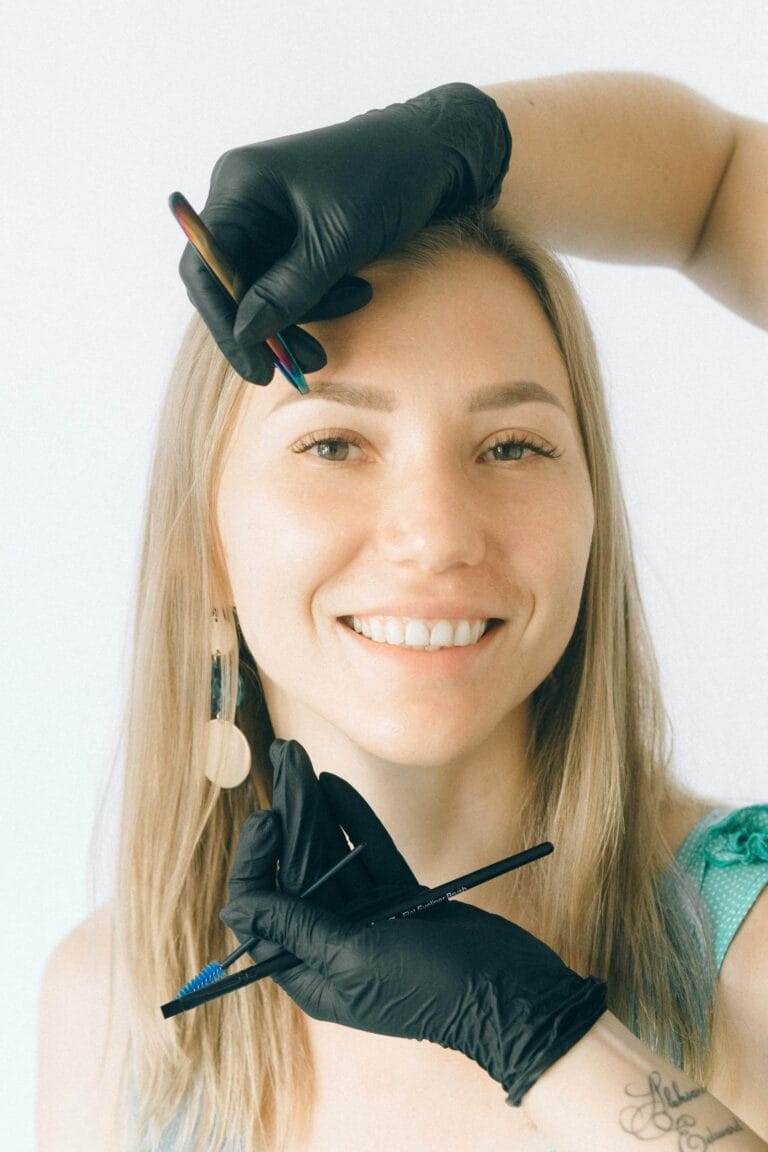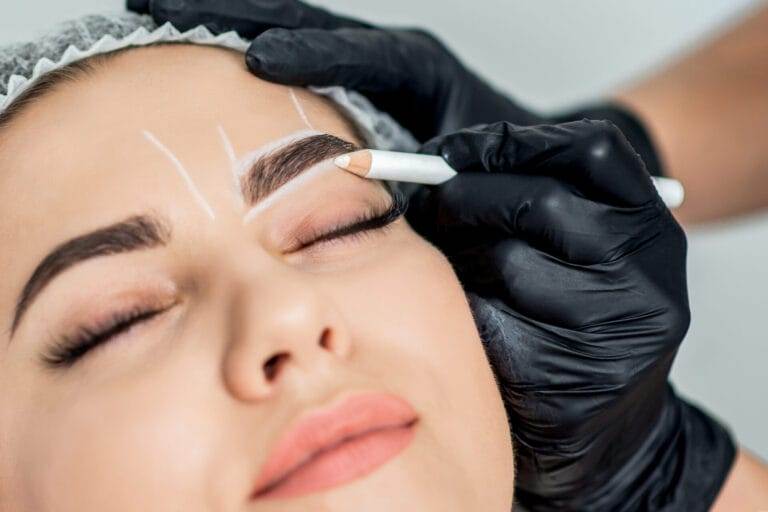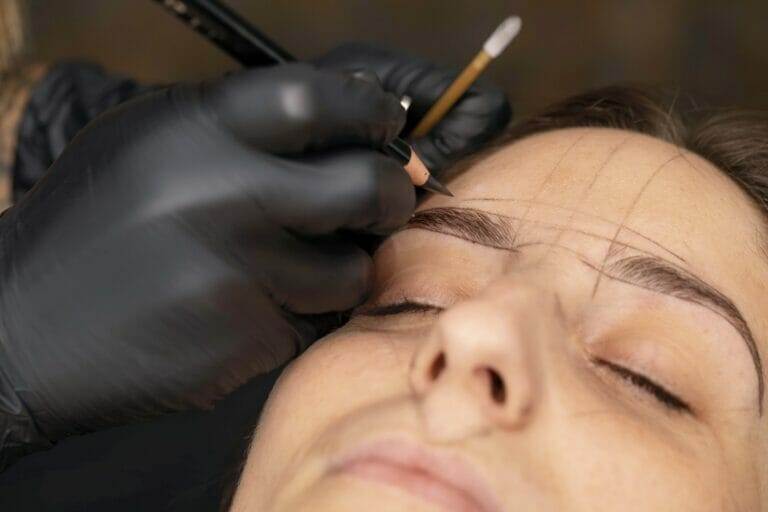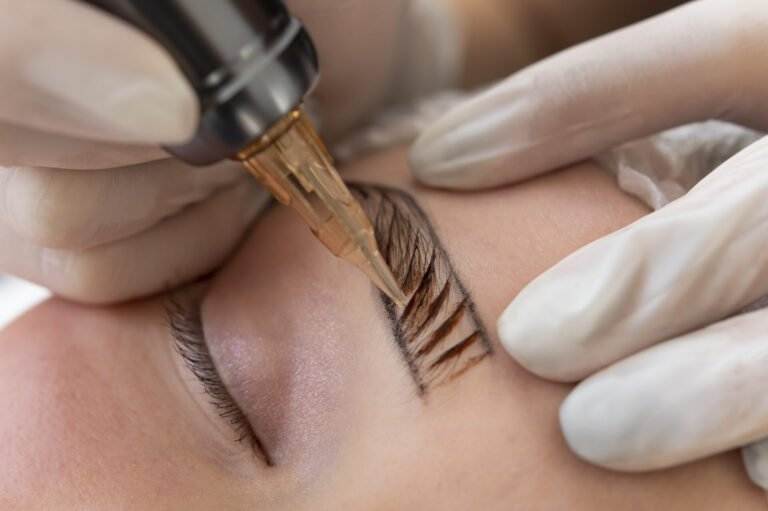What is Microblading?
Microblading is a semi-permanent cosmetic tattooing technique that creates natural-looking eyebrows. It involves using a hand-held tool with fine needles to deposit pigment into the superficial layers of the skin. Unlike traditional eyebrow tattooing, which uses a machine, microblading creates hair-like strokes that mimic the appearance of real eyebrows.
Benefits of Microblading
There are several benefits of microblading that make it a popular choice for individuals seeking to enhance the appearance of their eyebrows:
- Natural-looking results: Microblading allows for precise control over the shape, color, and thickness of the eyebrows, resulting in natural-looking and well-defined brows.
- Time-saving: With microblading, individuals no longer need to spend time filling in their eyebrows with makeup every day. The semi-permanent results can last anywhere from one to three years, depending on various factors such as skin type and aftercare.
- Ideal for individuals with thin or sparse eyebrows: Microblading is an excellent solution for individuals with naturally thin or sparse eyebrows or those who have lost their eyebrow hair due to medical conditions or treatments. It can help create the appearance of fuller, more symmetrical brows.
- Customizable to individual preferences: During the microblading process, the technician works closely with the client to determine the desired shape and thickness of the eyebrows. This ensures that the results are tailored to the individual’s preferences and facial features.
- Minimal downtime and discomfort: The microblading procedure is relatively quick, taking approximately two hours to complete. While there may be slight discomfort during the process, numbing creams can be used to minimize any potential pain. After the procedure, there is minimal downtime, allowing individuals to resume their daily activities shortly after.
In conclusion, microblading is a popular technique for achieving natural-looking, well-defined eyebrows. With its numerous benefits such as less time spent on daily eyebrow grooming and the ability to customize the results to individual preferences, it has become a go-to choice for many individuals looking to enhance their eyebrows.
The Microblading Process
The Numbing and Mapping of Brows
The microblading process begins with the application of a numbing cream to minimize any discomfort. Once the cream takes effect, the technician carefully maps out the shape and design of the brows using specialized tools and techniques. This ensures symmetrical and well-defined brows that complement the individual’s facial features.
The Microblading Technique and Tools
Microblading involves using a hand-held tool with fine, sterile needles to deposit pigment into the superficial layers of the skin. The technician creates hair-like strokes that replicate the appearance of real eyebrows, resulting in a natural and realistic look. Unlike traditional eyebrow tattooing, microblading offers more precise control over the shape, color, and thickness of the brows.
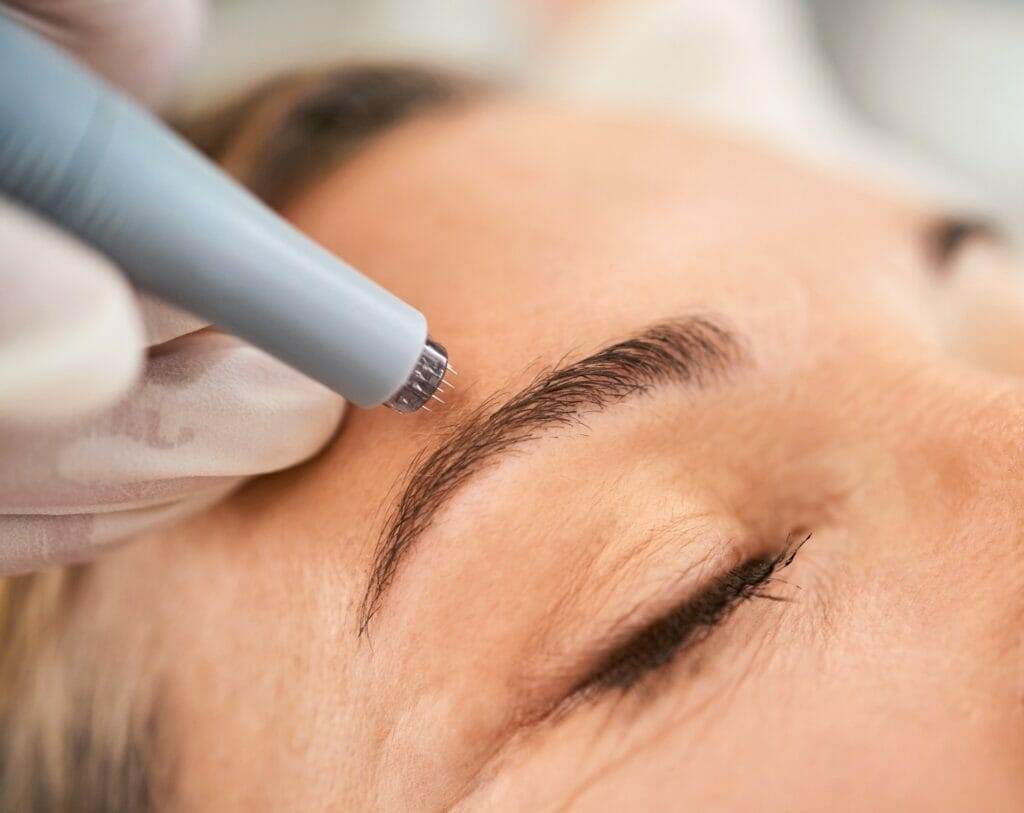
The tools used in microblading include the hand-held tool with fine needles and various shades of pigment. The technician carefully selects a pigment that matches the client’s natural hair color and skin tone, ensuring seamless and natural-looking results.
Overall, microblading is a meticulous process that requires expertise in order to achieve well-defined and natural-looking brows that enhance an individual’s overall appearance.
Aftercare Tips for Microbladed Brows
How to Care for Your New Brows
Proper aftercare is crucial to ensure optimal healing and longevity of the microbladed brows. Here are some essential tips to follow:
- Avoid getting the brows wet for the first few days after the procedure.
- Gently clean the area with a mild cleanser and water to remove any built-up oils and debris.
- Apply a thin layer of aftercare ointment or balm recommended by the technician to keep the brows moisturized.
- Avoid direct sunlight, saunas, steam rooms, and swimming pools for at least two weeks.
- Refrain from picking, scratching, or peeling the scabs that form during the healing process.
Retouching and Maintenance
Microbladed brows typically require a touch-up session after 4-6 weeks to perfect the shape and color and ensure long-lasting results. Additionally, periodic maintenance appointments every 12-18 months are recommended to keep the brows looking fresh and vibrant.
Following the aftercare tips, retouching sessions, and maintenance appointments will help preserve the quality and appearance of your microbladed brows for an extended period of time. Remember to consult with your technician for personalized aftercare instructions and recommendations.
Microblading vs. other Brow Enhancement Methods
Comparison with eyebrow pencils and powders
When it comes to brow enhancement, many people rely on eyebrow pencils and powders for a quick fix. However, microblading offers a more long-lasting and natural-looking solution. Here’s how microblading compares to these traditional methods:
- Duration of Results: While eyebrow pencils and powders provide temporary results that usually last only until you remove your makeup, microbladed brows can last anywhere from one to three years with regular touch-ups.
- Efficiency: Applying eyebrow pencils and powders can be time-consuming, especially if you’re trying to achieve a precise and symmetrical look. Microblading, on the other hand, creates perfectly shaped brows in just one session.
- Natural Appearance: Eyebrow pencils and powders can leave a drawn-on or painted look, whereas microbladed brows create hair-like strokes that mimic the appearance of real eyebrows, resulting in a more realistic and natural look.
Differences between microblading and eyebrow tattooing
Another popular method for brow enhancement is eyebrow tattooing. However, there are significant differences between microblading and tattooing:
- Technique: Microblading uses a hand-held tool with fine needles to deposit pigment into the skin’s superficial layers, creating hair-like strokes. Eyebrow tattooing, on the other hand, uses a rotary machine to implant ink into deeper layers of the skin, resulting in a more solid and blocky effect.
- Precision and Control: Microblading offers more precision and control over the shape, color, and thickness of the brows compared to eyebrow tattooing. This allows the technician to create a customized and natural-looking result that complements the client’s facial features.
- Healing Time and Longevity: Microblading requires less healing time compared to eyebrow tattooing, and the results generally last longer. While eyebrow tattoos may last for several years, they may also fade or change color over time, requiring touch-ups.
In summary, microblading outshines traditional brow enhancement methods like pencils and powders in terms of longevity, efficiency, and natural appearance. It also offers distinct advantages over eyebrow tattooing, including precise control and shorter healing time. Ultimately, the choice between these methods depends on individual preferences, desired results, and maintenance preferences.

The Healing Process
Understanding the stages of healing
After undergoing microblading, it is important to understand the stages of healing to properly take care of your brows. The healing process can vary, but generally, it consists of the following stages:
- Initial Healing: In the first few days after the procedure, the treated area may appear slightly darker and more intense. This is due to the pigment settling into the skin. It is normal to experience some redness and mild swelling during this stage.
- Peeling and Scabbing: Around the one-week mark, the eyebrows will start to scab and peel. It is crucial to resist picking at the scabs, as this can affect the healing and result in patchy brows. Let the scabs naturally fall off on their own.
- Color Fading and Settling: The color of the brows may appear lighter after the scabs have fallen off. This is normal and part of the healing process. Over the next few weeks, the pigment will continue to settle, and the true color will gradually reveal itself.
- Final Result: It typically takes four to six weeks for the eyebrows to fully heal and for the final result to be visible. At this point, any touch-up sessions can be scheduled if necessary.
Common concerns and how to address them
During the healing process, there are a few common concerns that may arise. Here’s how to address them:
- Itching and Tenderness: It is normal to experience some itching and tenderness as the skin heals. Avoid scratching or rubbing the treated area to prevent any damage or infections. Applying a healing ointment or using a cold compress can provide relief.
- Color Variations: The color of the brows may appear different during the healing process. As the pigment settles, the color will become more consistent. It is important to wait until the healing is complete before evaluating the final color.
- Inflammation: Mild swelling and redness are common in the early stages of healing. Applying a cold compress and avoiding activities that may increase blood flow, such as intense exercise or direct sunlight, can help reduce inflammation.
- Flaking and Peeling: It is crucial to avoid picking at the scabs or peeling skin, as this can disrupt the healing process. Keep the treated area moisturized with a recommended aftercare product to minimize flaking and peeling.
By understanding the stages of healing and properly addressing common concerns, you can ensure a smooth and successful microblading healing process. Following the aftercare instructions provided by your technician is essential for achieving the best results.

